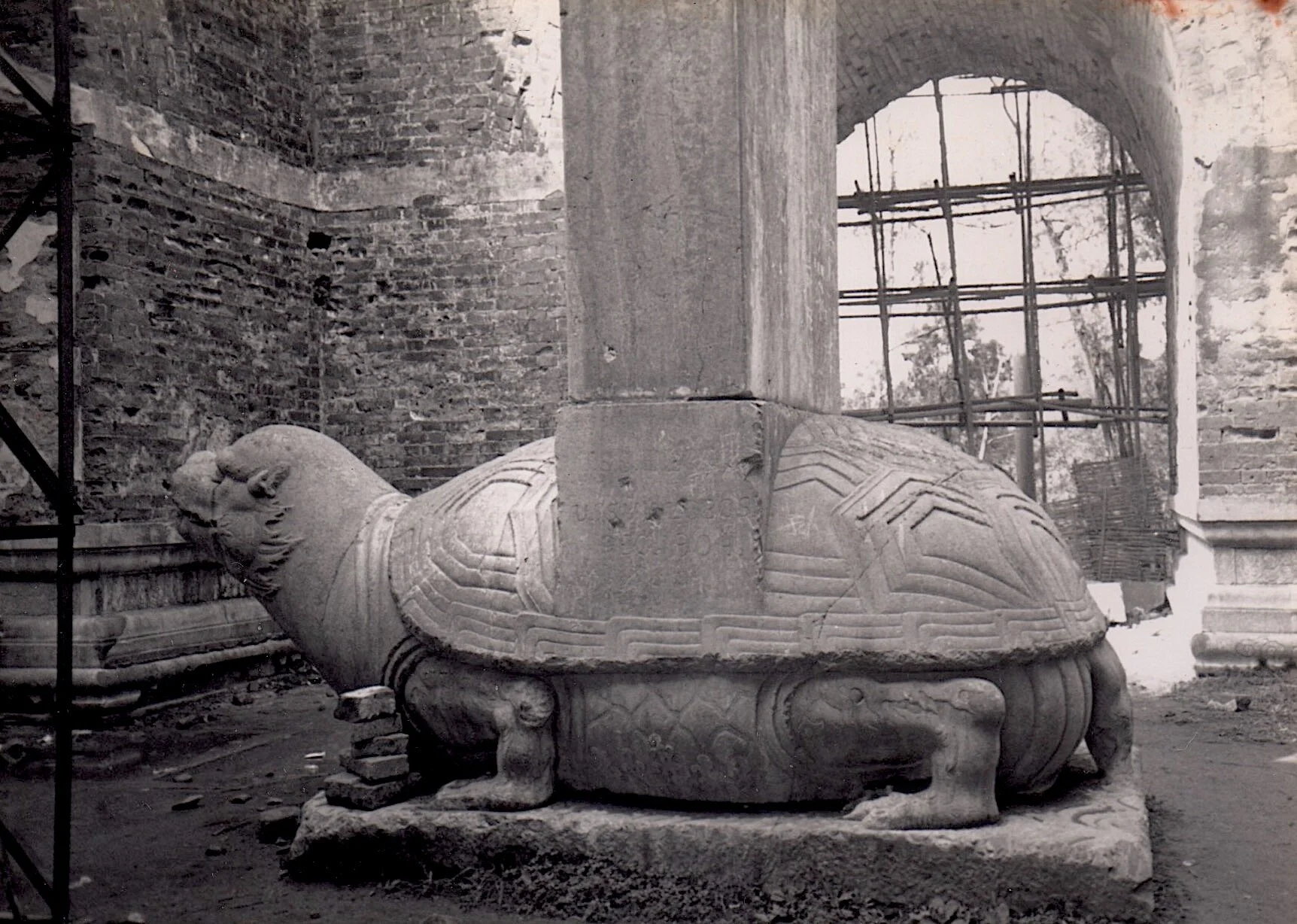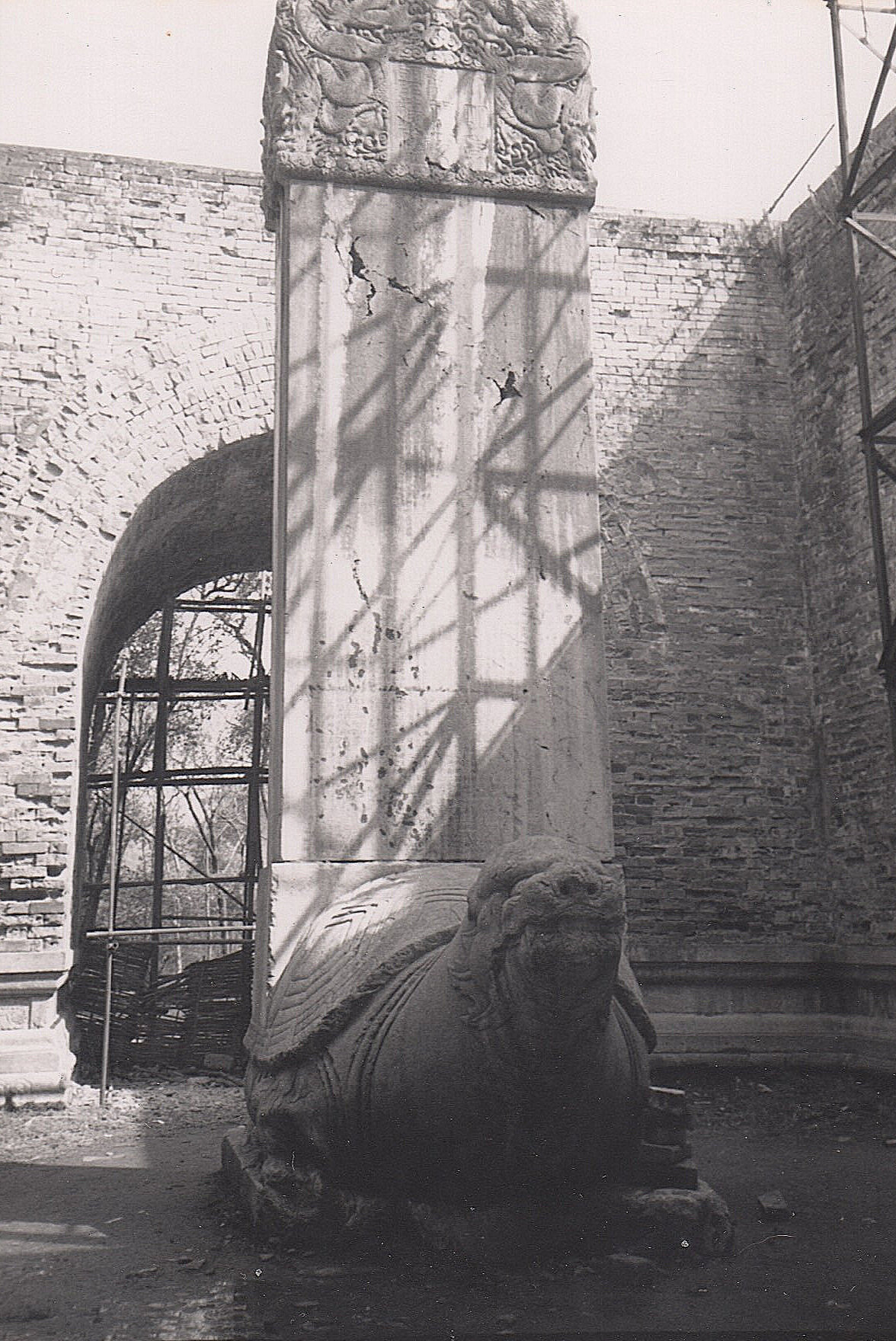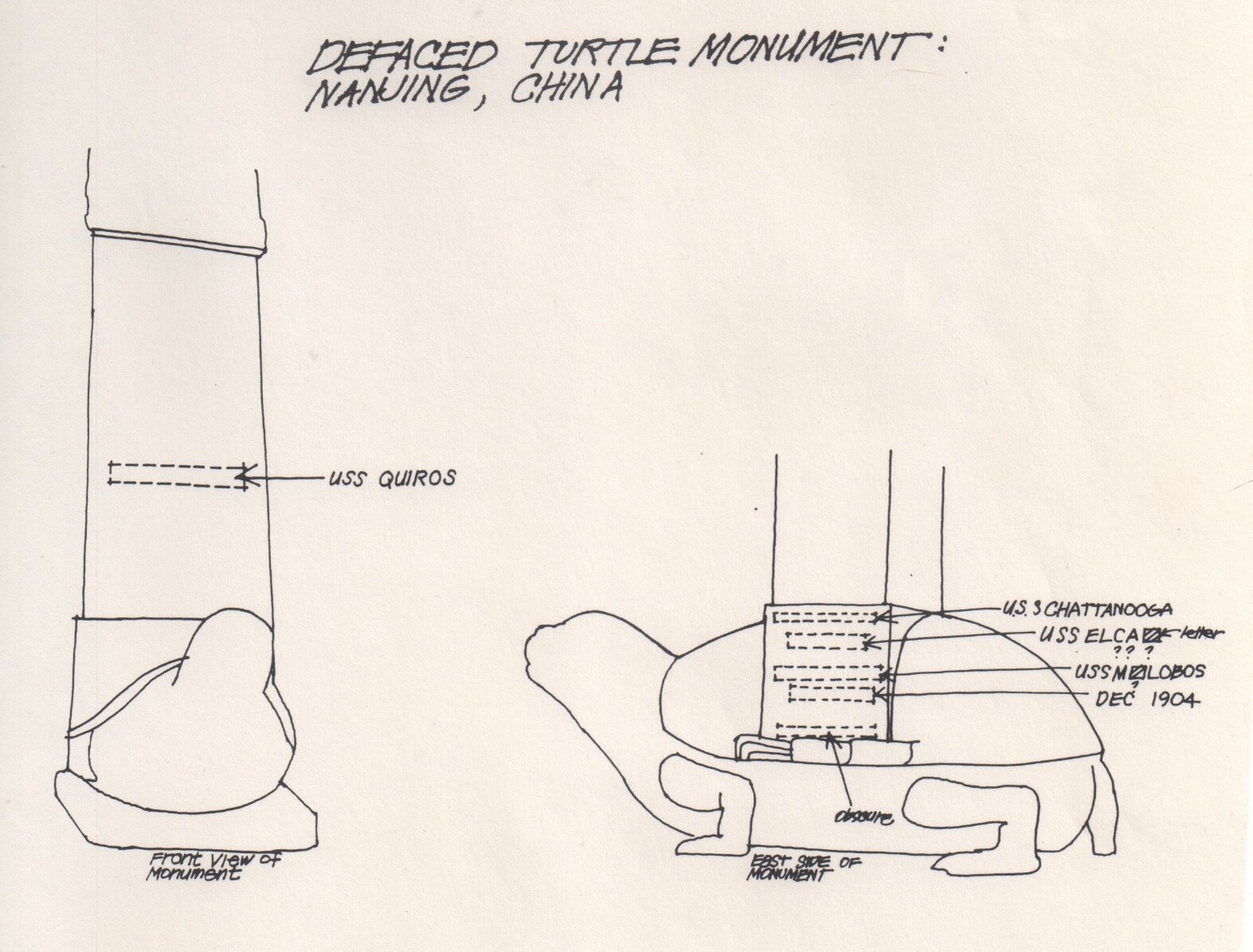US Navy in Nanjing (南京)
Early US Navy Encounters in Nanjing, China
The Stele of Godly Merit and Saintly Virtue
神功圣德碑
In March of 1989 the author visited Nanjing China as part of a larger trip of exploration. In Nanjing near the Ming Tomb, in a then roofless, poorly maintained structure known as the “Square City” he saw a large ‘turtle monument’ that many years later he found was called “The Stele of Godly Merit and Saintly Virtue” ( 神功圣德碑 ). Upon closer inspection of this monument, Craig noticed a number of English inscriptions scratched or otherwise chiseled onto the stele’s front and left side. These inscriptions named at least four United States Navy ships and the date, December 1904. The ship names were noted and along with two photographs of the monument and later passed along to the US Naval Historical Center in Washington, D.C. In turn the US Naval Historical Center provided further information on three of those ships as noted in the accompanying table.
Statement of the Author
Dating from around the year of Ming ( 明 ) Emperor Hongwu’s ( 洪武帝 ) death in 1398, a memorial to his life, the “Stele of Godly Merit and Saintly Virtue,” has witnessed over 600 years of epochal Chinese history. During this span of time, waves of emperors, rulers, native armies and foreign forces bringing relative peace or violent upheaval, have washed across the lands of the Middle kingdom (中國). Since the time of the prolonged, bloody and devastating Taiping ( 太平 ) Rebellion (1850-1864) when the roof to the Square City surrounding the monument was destroyed, the timeless elements of wind, rain, dust as well as the residue of modern industrial pollutants have left their marks on the tall stele and its original Chinese character inscriptions. The brutish vandalism by US ( 美國 “Beautiful Country”) sailors/ troops who recorded their presence in China in the early years of the twentieth century further defaced the stele’s surface.
But let us consider the tortoise ( 贔屭 and 龜 and 鰲 ). The tortoise forms the literal and spiritual base of the monument. Symbolically, its shell at once represents the vault of heaven arched over the flat earth, and when united with the living tortoise entity with its four limbs reaching to the four directions, it conveys the concept of cosmic immutability and longevity. In ancient times as well, tortoise shells after being subjected to heat and flame, cracked and fractured forming lines and patterns used for divination ( 貞龜 ).
See also "Downloads and Links" this site.

The “Stele of Godly Merit and Saintly Virtue”
The “Stele of Godly Merit and Saintly Virtue” as photographed in March of 1989. Graffiti noting at least four US Navy ships and the date December 1904 were chiseled onto the monument but cannot easily be discerned from these photos. Note on the above photo apparent bullet holes on square ‘block’ extending above the edge of the turtle’s carapace.

Front view of The “Stele of Godly Merit and Saintly Virtue” as photographed in March of 1989. Not discernible in this photograph, graffiti chiseled across the stele face approximately 2.8 meters above the tortoise’s back read “USS QUIROS” a reference to a US Navy ship originally built for the Spanish Navy in Hong Kong in 1894. The ship was captured by the US Navy as a result of the Battle of Manila Bay (Spanish-American War) in 1898. Subsequently the ship was commissioned by the US Navy for various assignments mainly in China. The USS Quiros patrolled the China seacoast and the Yangtze River from approximately 1905 to February 1908. The vessel was later recommissioned and took up the Yangtze Patrol from 1911 to around 1923 when the ship was decommissioned and intentionally sunk.

Author’s sketch sent to Naval Historical Center indicating the locations of the inscribed names of the ships and the date ‘December 1904’ as seen in March of 1989

Sources: Navy Department, Office of the Chief of Naval Operations, Naval History Division. The Dictionary of American Naval Fighting Ships. (Volume II, 1963 - Reprint with Corrections 1969; Volume V, 1970). Washington, D.C.